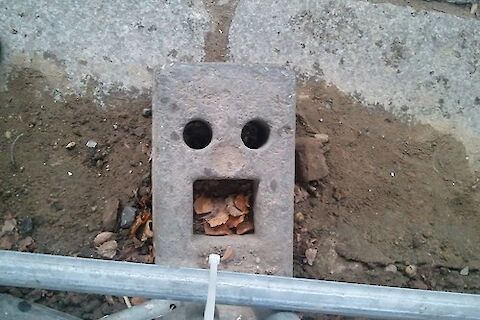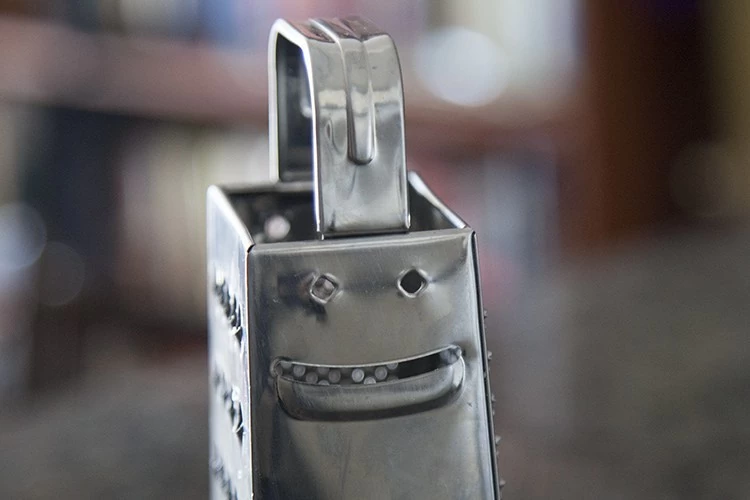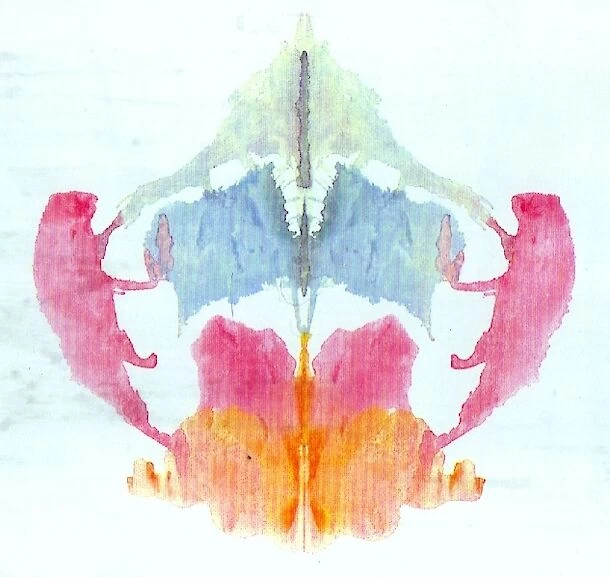

The problem with pareidolia
Pareidolia is one of the biggest problems when it comes to looking at images that are supposedly paranormal. A typical scenario in every paranormal investigator’s adventures is that they are presented in person or by email or social media etc with a photo. There is a picture of a house with windows. In one of the windows, they think they can see a figure. It does look like a figure and it is wearing a hat and everything! Upon closer inspection of the photo, you notice the windows are dirty and there are smudge marks. What you have been looking at was not a mysterious hat-wearing entity in the window, but merely your brain playing tricks on you.
What is pareidolia?
This is what you hear most investigators refer to as ‘Matrixing’ or ‘Pareidolia’. In a nutshell, your brain is trying to make sense of what it is looking at, so it makes you think you are looking at something you can familiarize yourself with. Think about it. How many times do you look into the clouds and think you see a man riding a horse or you look in the shower and on your steamy window you see a face or even a weird smiley face appearing on the brickwork of your house? This is the perfect example of Pareidolia.
This phenomenon is a form of apophenia which is where the brain tries to make sense out of patterns of data. It is thought that this psychological phenomenon was a form of survival that we have inherited from our ancestors.
"As soon as the infant can see, it recognizes faces, and we now know that this skill is hardwired in our brains. Those infants who a million years ago were unable to recognize a face smiled back less, were less likely to win the hearts of their parents, and less likely to prosper."
Carl Sagan
The Demon Haunted World 1995
If a baby did not recognize its parents, it would interact and smile less. It is thought that the brain was 'wired' to recognize the faces to be able to form bonds with its parents. When your child sees your face, it often lights up with a smile, even from those early weeks. The brain was trained to recognize faces.
Pareidolia and paranormal investigating
People get very protective when it comes to their photographs. If it is something they have taken, there is a personal connection and attachment to the photo. When we think we have caught something paranormal, we become very attached to the idea that it is indeed something paranormal. Likely the evidence was caught while a lot of other things were happening at the same time for us to think that what we have caught has some merit. When we present the evidence to another person, already they are going to see things differently. They are going to see it as a stand-alone piece of evidence without that emotional connection. Most evidence of course cannot hold up to these standards. The reviewer is not necessarily seeing the full picture of what is happening simply because most investigators don't have the tools or controls to be able to scientifically present that. What you are left with, is a person's word. We have to take their word when they tell us that no one was there. We have to take their word about conditions etc. Perhaps this piece of evidence was a validation of an experience they have had. Deep down they may feel in their gut that they just know it is something paranormal. They have developed an emotional attachment to this piece of evidence. You see this happen a lot when people present photos on social media often saying that it is proof their loved one was visiting or that an angel is looking out for them. It goes deeper than the piece of evidence that has been presented. In a way you are not just saying to them, 'no this is a case of pareidolia caused by the smudge on your mirror'. They feel like you are really saying 'no your loved one is not with you.' While some are very blunt in the delivery, others do try to be sympathetic by saying 'hey this is pareidolia but that doesn't mean they are not with you, they probably are, this is just not evidence of that'.' Most of the time, they will still not accept this because again they have that emotional attachment. I honestly don't think this kind of thing will ever stop so I know I don't review or comment on these kinds of things anymore. They feel it gives them the comfort they need and I leave it alone. My approach is really through this blog. I put the information out there, and the people that follow and read are the ones that will digest the information. If they disagree with my thoughts, well they usually let me know in a very impassioned response because they are emotionally attached to their ideas of the paranormal.

Image Source: https://digital-photography-school.com/pareidolia-in-photography/
The problem with pareidolia
The biggest problem with pareidolia is just as said above, everyone sees it differently so what they are seeing is not necessarily wrong because it is what they are indeed seeing, it is just different from what the next person is seeing because of how our brain in processing the information. In order to highlight just how differently people interpret the same image, I recently did a little social experiment on my social media pages. I posted the following to my pages and asked people to tell me what they saw at first glance.
The Rorschach inkblot test is a very popular and controversial method of psychological evaluation. You may recognize it from television shows and movies as a benchmark used in psyche evaluations. This is considered to be a great example of applied pareidolia. During the Rorschach test, individuals are shown a series of inkblots and are asked to say the first thing that comes to mind. Because the inkblot stimulus is open to interpretation depending on the person, it is said to reveal some of our deepest unconscious thoughts.

Source: https://www.all-about-psychology.com/pareidolia.html
It is safe to say that there were quite a few different interpretations of what people thought the above photo represented. Some of the responses were: bears climbing a wall, a lobster, a demon with claws, a pelvis, wedding dress, samurai, a rib cage, bird, a butterfly, lizards, a brain, panthers, tigers, and many more.
So with this experiment in mind, the question becomes, why is it some perceive it in a certain way?
A study into the area of pareidolia wanted to explore why we see the faces where there are indeed are none. Is it something that we are automatically hard-wired to do or is it related to some sort of cognitive process and interpretation based on each person?
The tendency to perceive faces in random patterns exhibiting configural properties of faces is an example of pareidolia. Perception of ‘real’ faces has been associated with a cortical response signal arising at about 170ms after stimulus onset; but what happens when non-face objects are perceived as faces? Using magnetoencephalography (MEG), we found that objects incidentally perceived as faces evoked an early (165ms) activation in the ventral fusiform cortex, at a time and location similar to that evoked by faces, whereas common objects did not evoke such activation. An earlier peak at 130 ms was also seen for images of real faces only. Our findings suggest that face perception evoked by face-like objects is a relatively early process, and not a late re-interpretation cognitive phenomenon.
The findings suggest that Carl Sagan is correct. It seems it is something that the brain is hardwired to do. It is hardwired to find a face. The question becomes then if it is not cognitive, why do we interpret things so differently when it comes to pareidolia in photos that are thought to be paranormal? I guess my answer here is that while our brain is hardwired to find these faces and we all see them that way, what we decide the faces are is very much a cognitive decision. A cognitive bias is an error in the way that we think. It means we are not necessarily thinking with a 'clear mind'. Our experiences, our beliefs, and our intentions all influence the way we think, the way we make decisions, and the way we interpret our surroundings. Just the fact that we believe in the paranormal makes us bias. I see the faces all the time, however, I know what is happening based on my research and just being aware of what pareidolia is. It highlights to us how important knowledge and some education is when it comes to the paranormal. Our belief system ultimately is what is going to interpret what that face is.
Of course, a person could argue that maybe the way we interpret what we are seeing is by paranormal influence, much in the way many say if you are thinking of someone who has passed it is because they are with you for example. I don't know the answer here, but the problem is that we are never going to agree simply because of our own bias'. So where does this leave us?
As I am always saying, this is where we can work together. People with different areas of backgrounds and beliefs when working together could potentially cover so much more ground than trying to nut it out alone. Pareidolia doesn't have to be a problem, it could be a research project to truly understand the why. We know from studies how we see the faces, now we need to understand why some see them as paranormal.
If you enjoy LLIFS, consider buying me a book (otherwise known as buy me a coffee but I don't drink coffee and I LOVE books). Your donation helps to fund the LLIFS website so everyone can continue to access great paranormal content and resources for FREE!

Top pages with similar subjects
Don't forget to follow the Facebook page for regular updates
Join the mailing list to receive weekly updates of NEW articles. Never miss an article again!
Buy the latest and past issues Haunted Magazine
Check out the books written by LLIFS